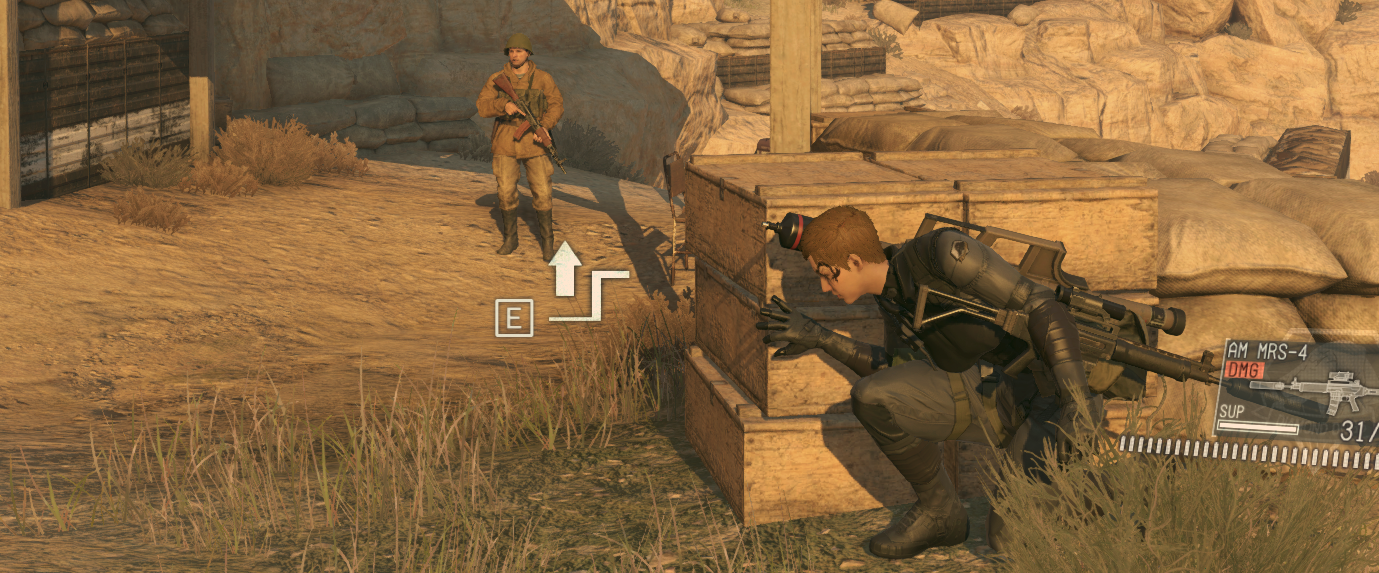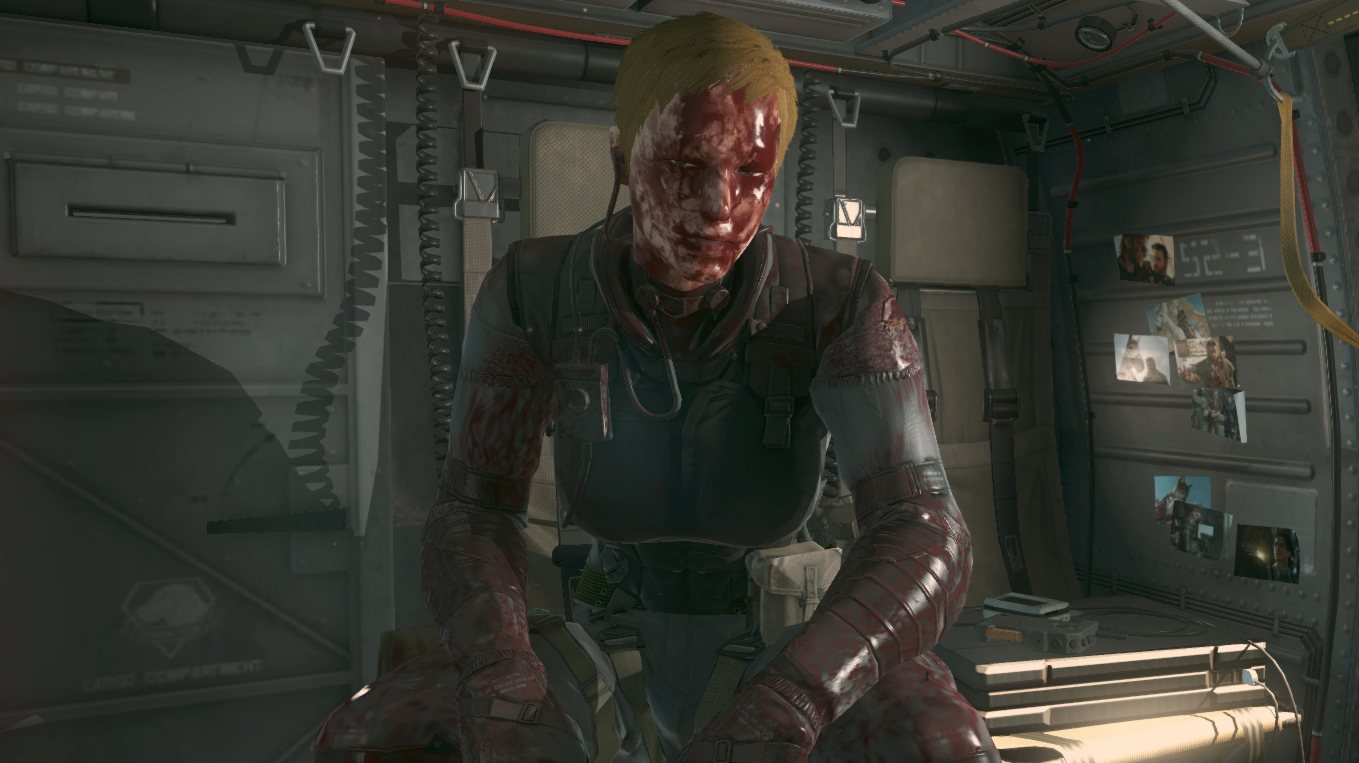TOM FRANCIS
REGRETS THIS ALREADY
Hello! I'm Tom. I'm a game designer, writer, and programmer on Gunpoint, Heat Signature, and Tactical Breach Wizards. Here's some more info on all the games I've worked on, here are the videos I make on YouTube, and here are two short stories I wrote for the Machine of Death collections.
Theme
By me. Uses Adaptive Images by Matt Wilcox.
Search

Metal Gear Solid V’s Failure Spectrum
This post is part of a series. I mention abilities and tools but no story spoilers.
Being an outsider to the Metal Gear series, I was only cautiously optimistic about V. All I heard about the last one was that it had 90-minute cut-scenes. I watched enough of one of them on YouTube to determine that it was… not my cup of tea. Of V, I’d seen some fun stuff in videos, but I was half-assuming the story would barge in and ruin it.
Well, the story does barge in. But only for the intro and a few brief intrusions, spread out over the vast, ridiculous amount of time I’ve played the game for so far – at least thirty hours, I think. That’s a ridiculously tiny fraction, and the rest is extraordinarily good.
So many things about it are surprising or different or interesting and I want to write about all of them. So I think I’ll do that, one post at a time, starting with this:
MGS V is extremely forgiving
Outside of those few scripted intrusions, I’ve only actually died a handful of times in those thirty hours. The game has an enormous failure spectrum – I mentioned these in respect to Invisible Inc, but here’s the gist:
When you can fail at something but still carry on playing, I call the range of states between perfect success and total failure a ‘failure spectrum’.
MGS V has most of the stealth genre’s most generous failsafes, plus an incredibly generous one of its own inserted at the crucial moment – Reflex Mode. The result is something like this:
- If a guard sees you, you get an ‘awareness’ indicator showing you where they are. If you reduce your visibility, that goes away completely and the guard won’t even investigate.
- If you stay in sight and/or make yourself more visible, the guard will very, very slowly come over to investigate. Even then, this alerts no-one else and doesn’t count against you in any score or performance metrics, and you don’t even have to move: going prone and using a ‘hide’ button makes you damn nearly invisible – I’ve had a guard stood 2 feet from me shining a torch directly on my body without spotting me in that mode.
- If they DO definitively see you and recognise you as an intruder, Reflex Mode puts the world in slowmo and you get a huuuuuuuuge amount of time to do something about it. Your view is snapped to the person who saw you, the yelp of recognition they make seems to be inaudible to other guards, and if you shoot them in the head with a quiet weapon (you start with two) in this ample time, no alert is triggered.
- If you fail to take them out in this time, or someone else sees them die, the surviving guard will yell. Others in earshot will be alerted, but no-one beyond that at this stage. Your default weapon is rapid fire, accurate and silenced, and if you can take out everyone who heard before they have a chance to radio, the alert is contained.
- Even if you do give them time to radio, it will do nothing if you’ve already taken out their communications equipment.
- Even if they manage to radio for reinforcements, it’s easy to run away and they won’t give chase.
- Even if you don’t run away, it’s quite possible to kill everyone without taking a hit.
- Even if you take a hit, your health regenerates for free.
- Even if you get hit a LOT – even if you get hit by a mortar – you only go into a ‘wounded’ state that restricts your movement but still gives you a chance to take everyone out.
- If you fuck that up, yeah, you’re dead.
Listing it like that makes it sound absurd, but I really think this is one of the main reasons I and so many people end up having such a great time. Moving to these messier states creates stories of panic and improvisation, instead of frustrating game-overs. It’s the same reason it works in Invisible Inc:
A big failure spectrum is good because a lot of the most emotional moments in a game happen on the cusp of failure. If you were this close to being seen, your escape is exhilarating. But if failure is a ‘game over’ screen, spending a lot of time on the cusp of failure means a lot of ‘game over’ screens. Each one interrupts your immersion and ends your investment in this current run. It pulls you out of the game, and you find yourself in a menu, then at a checkpoint or a savegame. Mentally acclimatising to how much of your story has been lost forces you to disengage from it, and you have to build up all that immersion again from scratch.
If failure isn’t game over, it’s still nail-biting when to come close to it. And when you do slip over the threshold, it’s just another development in the story you’re creating and living through.
